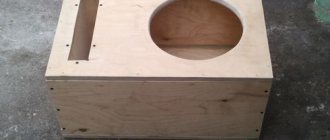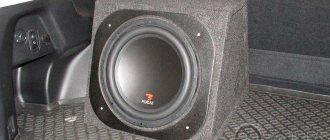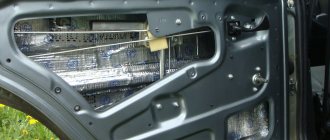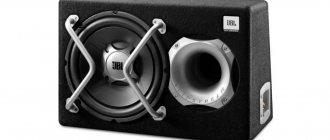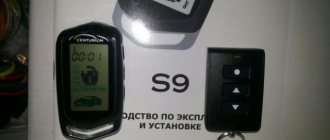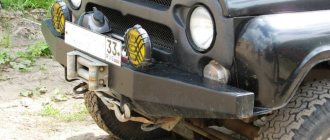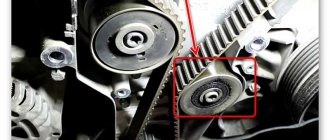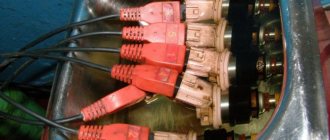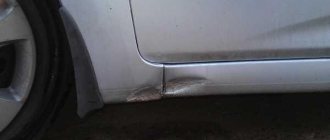- Tuning
- Car audio
Apr 25, 2014
Before you start designing and assembling the box, you need to decide on the choice of speaker. We recommend choosing 10-12 inch imported speakers, as they are most often used in car subwoofers and are best suited. We described in detail how to choose a speaker for a subwoofer in a previous article. The design of the box is also important: the quality and volume of low-frequency sound depends on it.
What types of subwoofer boxes are there?
There are several types of subwoofer boxes. you get at the output directly depends on the design of the box Below are the most popular types of subwoofers:
A closed box is the easiest to manufacture and design; its name speaks for itself. The woofer is housed in a sealed wooden housing, which improves its acoustic performance. Making a subwoofer in a car with such a housing is quite simple, but it has the lowest efficiency.
A 4th order bandpass is a type of subwoofer whose body is divided into chambers. The volumes of these chambers are different; in one of them there is a speaker, and in the second there is a bass reflex (air duct). One of the features of this type of subwoofer is the design's ability to limit the frequencies that the cone reproduces.
The 6th order bandpass differs from the 4th order by the presence of another bass reflex and another camera. There are two types of 6th order bandpasses - the first has one bass reflex, and the second has two (one of them is common to both cameras). This type of box is the most difficult to design, but produces maximum efficiency.
A bass reflex is a subwoofer with a special tube in the housing. It vents air and provides additional sound from the rear of the speaker. In terms of complexity in manufacturing and sound quality, this type is a cross between a closed box and a bandpass.
If you want to get the highest quality sound, you can opt for bandpasses. But this type of design has many details that must be carefully designed and calculated. All this can be done using a special program WinlSD, which will not only determine the optimal size and volume of the subwoofer, but also create a 3D model of it, and also calculate the dimensions of all parts.
Unfortunately, this program requires at least minimal knowledge in this area and the average car enthusiast is unlikely to be able to do everything right the first time. Moreover, in order for the program to work correctly, it needs some speaker parameters, which are also not known to everyone. If you do not plan to take part in car audio competitions, we advise you to discard the bandpasses.
Are you interested in auto tuning? Detailed instructions for installing parking sensors with your own hands especially for you!
Do you know what tiptronic is? Read the article about the pros and cons of this gearbox.
A bass reflex will be the most optimal solution for a homemade subwoofer. This type of box is good because the tube (bass reflex) allows you to better reproduce the lowest frequencies. In fact, this is an additional sound source that contributes to the sound of the subwoofer and increases efficiency.
Making your own port
The bass reflex, just like the speaker, is involved in sound reproduction. To avoid the interference effect, the channel is placed closer to the low-frequency emitter at a distance not exceeding its wavelength. Rigid structures are used as FI, for example, plastic sewer pipes are used in homemade products.
But when trying to calculate a bass reflex for a subwoofer, consumers are faced with the fact that the diameter of such pipes does not coincide with the calculated values, so the pipe is made from a dense material at hand - whatman paper. In order to make a channel yourself, you will need:
- newsprint;
- whatman;
- glue.
A strip cut from whatman paper, the width of which coincides with the length of the tube, is wound in several turns on the surface of newsprint. In this case, epoxy glue is applied before each turn. It is obtained by mixing resin and hardener according to the instructions. After all the turns have been completed, the product is wrapped in a circle with thread to impart rigidity and placed to dry.
After a day, the base is removed. If difficulties arise, it can be broken from the inside and taken out in parts. A manufactured channel of this type has good strength and is easily subject to additional processing. Next, the resulting tube is installed in the hole of the speaker, but not all the way, and listening to the sound begins. In the factory, a special device is used. Such a device operates on the basis of a multivibrator, which is tuned to the resonant frequency of the dynamic head. After connecting the speaker, the generator starts and the length of the pipe is adjusted to the maximum fluctuation of air in it.
You can do the same setup yourself. To do this, a low frequency signal is supplied to the input. The tube is moved forward or immersed inside the box, and then the volume of escaping air is assessed. Having established the position of its maximum outlet, the excess pipe is removed from the outside, and the port itself is sealed. If desired, to give the structure a finished look, open the pipes, but you can do without it.
What materials do we need to assemble the subwoofer?
The material for making the subwoofer box must be durable, dense and well insulating sound. Multilayer plywood or chipboard is perfect for this . The main advantages of these materials are their affordable price and ease of processing. They are quite durable and provide good sound insulation. We will make a subwoofer from 30 mm thick multilayer plywood.
To make a subwoofer box we will need:
- Wood screws (approximately 50-55 mm, 100 pieces)
- Soundproofing material (Shumka)
- Drill and screwdriver (or screwdriver)
- Jigsaw
- Liquid Nails
- Sealant
- PVA glue
- Carpet, approximately 3 meters
- Klemnik
Subwoofer box drawings
In this article we will make a box for a subwoofer with a 12-inch speaker. The recommended box volume for one 10-12 inch speaker is 40-50 liters . Calculating a box for a subwoofer is not difficult, here is an approximate diagram with the dimensions of the panels.
It is worth paying attention to the minimum distance from the walls of the case to the speaker. It, like the volume of the entire box, is calculated based on the inner surface.
Video instruction: how to make a drawing for a subwoofer yourself
Calculation of the FI box using JBL SpeakerShop and BassPort programs. — DRIVE2
Before you begin calculating the bass reflex enclosure for a specific subwoofer speaker, you need to find out what Thiel-Small parameters the speaker has and understand what they are: For an adequate calculation, three parameters are enough. Fs is the resonant frequency of the speaker, indicated in Hz (hertz). Vas is the equivalent volume indicated in liters.
Qts – total quality factor of the speaker.
1. Calculation of the net volume and tuning frequency of the bass reflex. To do this, you need a program for calculating subwoofer enclosures, there are quite a lot of them, both paid and free, the most popular and easy to use is the JBL SpeakerShop program. In the program, you need to specify the Thiel-Small parameters, selecting the volume of the box and setting the bass reflex port, to obtain the required frequency response graph.
2. Calculation of the bass reflex port. Very quickly and conveniently, and most importantly with great accuracy, you can calculate the port at the desired frequency in the BassPort program.
We enter in the program: The required frequency of tuning the FI port The previously obtained net volume of the box The effective area of the speaker diffuser (measured, the length along the center of the speaker from one middle of the suspension to the opposite middle of the suspension) The maximum stroke of the diffuser in one direction (indicated in the instructions or on the manufacturer’s website as Xmax , can be indicated either in one direction or in both directions at once) Select the port cross-section Enter the dimensions of the port Press the calculate button and get the required port length “L”, as well as other equally important data, in particular - the displacement of the port, which will be added to the volume of the subwoofer enclosure.
3. We calculate the total volume of the FI case. In the JBL SpeakerShop program, we learned what pure volume is needed for a particular subwoofer, as well as what frequency is best to set the FI port. At Bassport, we calculated how long the FI port should be based on its area, and found out how much volume the port would occupy.
Now we add up: net volume + port volume + 3 – 4 liters (volume displaced by the speaker) and we get the total internal volume of the future FI case. If roundings, stiffening ribs are used in the housing, if the housing is slotted, etc., this must also be taken into account in the total volume. Example: *Net volume - 45 liters.
*Slotted port, area 140 cubic cm. at 36 Hz - 8.5 l., plus 3.8 l. on the port wall of 18 mm. plywood. *Displacement by speaker - 3 liters. *Total - 60.3 liters. the total volume of the hull FI. Now, it would seem the most incomprehensible thing is how to obtain the dimensions of the hull based on the known displacement? We have a volume of 60.3 liters.
Advice
We measure the trunk, see what dimensions suit us, for example: height - 40 cm, length - 60 cm, we just need to find out the width. We subtract the thickness of the walls from the height and length (let it be 18 mm plywood) and we get: height - 36.4 cm, length 56.4 cm.
Now we calculate: 60.3 * 1000 / 36.4 / 56.4 = 29.4 - the width of the body, without walls, with walls 33 cm.
This is what the calculation of a bass reflex enclosure for a specific subwoofer speaker looks like. I ask you not to take this article as a clear guide to making a FI subwoofer, there are a lot of points and subtleties that are not taken into account.
Who is interested in car audio, join vk.com/sound_paradise
Assembling a subwoofer box with your own hands
You can start assembling. We use a 12-inch Lanzar VW-124 speaker.
Its diameter is 30 cm, and the first thing you need to do is cut a hole for the speaker. The minimum distance from the center of the diffuser to the subwoofer wall is 20 cm. We measured 23 cm (20 cm + 3 cm plywood width) from the edge of the panel and cut a hole with a jigsaw. Next, we cut a hole for the bass reflex slot; in our example, it has a size of 35*5 cm.
Instead of a slot, you can use a classic air duct - a tube. Now we assemble the bass reflex slot and attach it to the front panel of the subwoofer. We go along the joints with liquid nails and tighten them with self-tapping screws.
It is important to tighten the screws very tightly so as not to leave any voids. They will create resonant vibrations that will ruin the sound of the subwoofer.
Next, we assemble the side walls of the box, having previously lubricated them with liquid nails, and tighten them tightly with self-tapping screws.
On the back cover of the box you need to cut a small hole for the terminal block. We connect all parts of the body. We make sure that we cut and fastened all the parts correctly.
We insert the speaker. Let's look and admire.
Let's move on to the interior decoration of the box. The first thing you need to do is seal all the joints and cracks with epoxy glue or sealant. Next, using PVA glue, we glue soundproofing material onto the entire inner surface of the box.
Now we cover the entire outer plane of the box with carpet, including the bass reflex slot. You can attach it with epoxy glue or using a furniture stapler.
Next, insert and screw the speaker tightly. The subwoofer is almost ready, all that remains is to stretch the wires from the speaker to the terminal block and connect the amplifier.
We bought an additional amplifier, but you can also make it yourself. This is quite difficult, as it requires knowledge and practice in the field of radio engineering. You can also use ready-made kits and circuits for radio amateurs, like Master-KIT, and assemble the amplifier yourself. The only requirement for the amplifier is that its maximum power must be less than the maximum power of the speaker .
See also a video report on making a homemade subwoofer for 2 speakers
Case size calculation
When the volume of the body is known, the shape of this body does not affect the sound. There are various programs for calculating a box for a subwoofer (a program for calculating a subwoofer box is “JBL SpeakerShop” or “Winisd beta.”), but you can simply do the calculation, knowing yourself that the volume is V=hx L x A (where h is the height , L - length, A - width).
For example, how to calculate a box for a subwoofer, if for a 12-inch subwoofer (305 mm), the recommended volume is 45 liters. The measured permissible height for the body in a car is 340 mm (h=340 mm), length 680 mm (L=680 mm), let's calculate the width. A=V/Lxh
Read also: Sherkhan Magikar 5 autostart does not work
The permissible height (h) for space in the car is h=340 mm=34 cm=0.34 m, and the permissible length L=680 mm=68 cm=0.68 m. 1 liter = 1•10−3 m³ 1 l = 0.001 m³ then V= 45 l = 0.045 m³.
Don't forget that there is an internal and external volume, so you need to take into account the thickness of the material from which the subwoofer box is made. If the box is made of MDF with a thickness of 2 mm (0.02 m), then we reduce the measured values of height and length by the thickness of the MDF on both sides and calculate the internal volume. h = 0.34m -0.02 x 2= 0.3m; L = 0.68m – 0.04m = 0.64m.
In addition, it is necessary to take into account when calculating the volume of internal struts used in the manufacture of the body. Suppose we use a beam with a thickness of 3 cm by 3 cm as spacers, then we get 4 bars with a length of 0.64 m (length L = 0.64 m) and 4 bars with a length of 0.24 m (the length obtained from the height “h” reduced by 3 cm on both sides 0.3 – 0.03 x 2 = 0.24). For now we will not take into account the internal struts on the sides. The volume that the spacers will have in this case is V=(0.03 x 0.03 x 0.64) x 4 +(0.03 x 0.03 x0.24) x4=0.003168 m³. Then we increase the volume of the box by the volume of the spacers. V= 0.048168 m³ A = V/L xh = 0.048168 m³ /0.3m x 0.64 = 0.2509m. If the volume is increased by the volume of the side struts, then A = 0.255 m. We want to make a subwoofer enclosure with a slightly inclined front wall, in this case the lengths of the side walls will change: if A = 0.255 m, then A = a + b / 2 = 0 .33 + 0.18 /2=0.255, that is, reduce the length “b” by the amount by which you increase the length “a”.
If you need to calculate the volume of a box for a subwoofer of complex shape! Then you can contact our Auto Studio to calculate and manufacture the body.
for example, the subwoofer housing is installed in a wing niche, and will have a complex geometric shape, repeating the geometry of the niche, while the rear part of the subwoofer housing has different shapes. In this case, you will have to calculate the subwoofer housing in parts, counting volumes “1” and “2” separately » parts.
